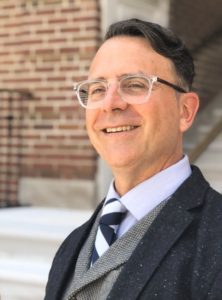Bona Verba from the Headmaster
Last year, Cincinnati Classical Academy established a unique tradition known as History Dress-Up Day, which will now be celebrated on campus each October 31. Unlike the typical festivities of the day featuring monsters, superheroes, or pop culture icons, this event invites CLASSICAL students to step into the shoes of their favorite historical figures.
Last year, students at CLASSICAL portrayed a wide array of historical characters. These ranged from renowned figures like Socrates, Albert Einstein, George Washington, Harriet Tubman, and Queen Elizabeth II to characters representing specific historical periods, such as Roman centurions, Civil War soldiers, and WWII Red Cross nurses. It’s worth noting that our teachers enthusiastically joined in the fun by dressing up as historical figures themselves, appearing as Dante, Alexander Hamilton, Sacajawea, Betsy Ross, Mark Twain, Cleopatra, and more!
Of course, History Dress-Up Day isn’t just about donning a costume; it’s a powerful educational tool that breathes life into the history curriculum. One of the standout features of the day is its emphasis on active learning. In a way, students become active participants in history. They step into the shoes of historical figures, immersing themselves in the past on a personal level.
Students understand that to accurately embody their selected historical characters, thorough research and in-depth study are essential. This involves investigating the lives, motivations, and historical contexts of these figures. As a result, students develop a deeper understanding of historical events and individuals, going beyond the surface-level facts found in textbooks.
We’ve also noticed that critical thinking is another skill that blossoms during History Dress-Up Day, going hand-in-hand with the content knowledge understanding. As students explore the intricacies of their chosen characters, they analyze the character’s actions, beliefs, and motivations. Understanding history is not just about knowing facts (although the facts are important indeed); it’s also about grasping the context in which historical events unfolded. By embodying historical figures, students gain a better understanding of the historical context in which these figures lived; this contextual knowledge enriches their historical understanding.
The most notable consequence of History Dress-Up Day is in its ability to ignite a profound awe and enthusiasm for history among students. This impact extends far beyond the confines of the classroom, as it nurtures a bona fide interest in historical narratives and events. This engagement transforms students into proactive seekers of knowledge, driven by their growing interest in history. Last year, we witnessed this transformation in students of all grades, each expressing a unique fervor for historical exploration. For instance, a third-grade student who portrayed Queen Elizabeth II stopped by my office to discuss the intricacies of British monarchy, while a sixth grade student dressed as Albert Einstein told me he became captivated by the fascinating world of “theoretical physics.” The enchantment of history becomes contagious, creating a community of enthusiastic learners eager to uncover the secrets of the past.
So, yes, for CLASSICAL students, this is more than a costume event; it’s an innovative approach to history education. It transforms history into an immersive experience, enhances students’ understanding of history and, in many cases, ignites a lifelong passion for the subject matter. At the same time, this unique celebration strengthens bonds among classmates and provides an alternative, mission-driven approach to October 31!

Mr. Michael Rose
Meet the Headmaster
Mr. Rose has taught various courses at Brown University, Cincinnati Moeller, and The Summit Country Day School. As a part of his degree work in education, Mr. Rose’s research interests included the Great Books curriculum, the Paideia teaching method, and the “effects of emerging digital technology on student reading, writing, and researching.” Read More

